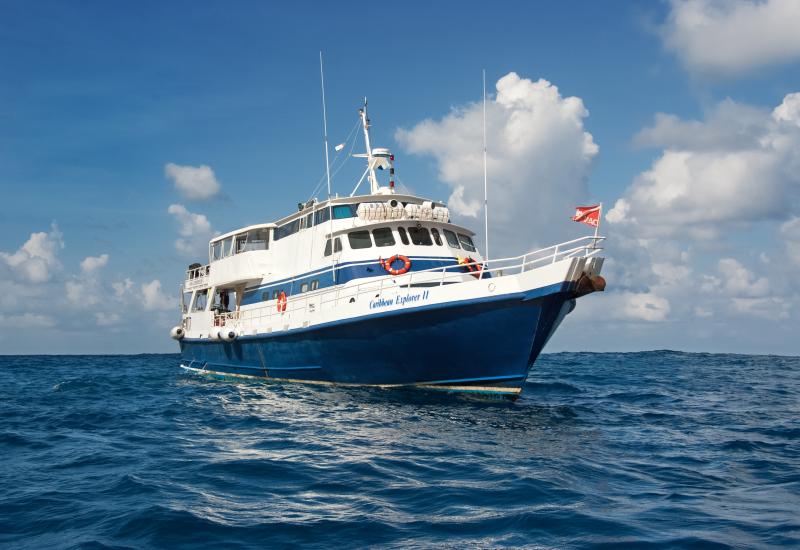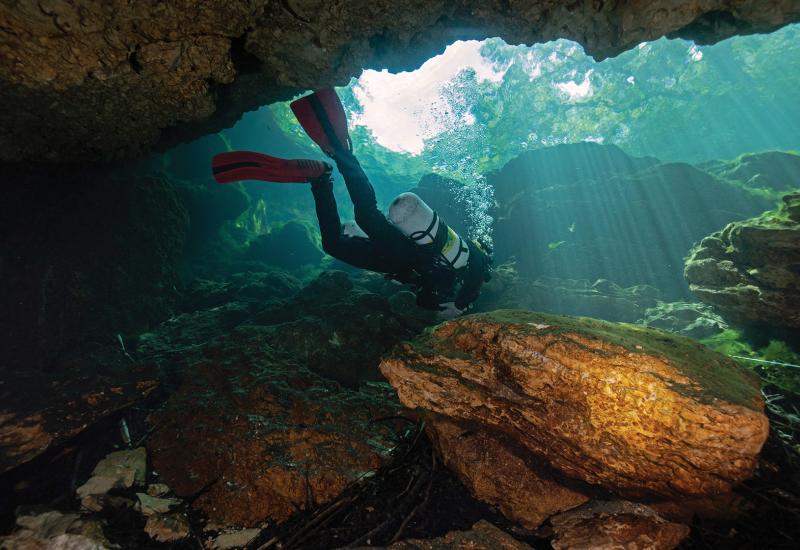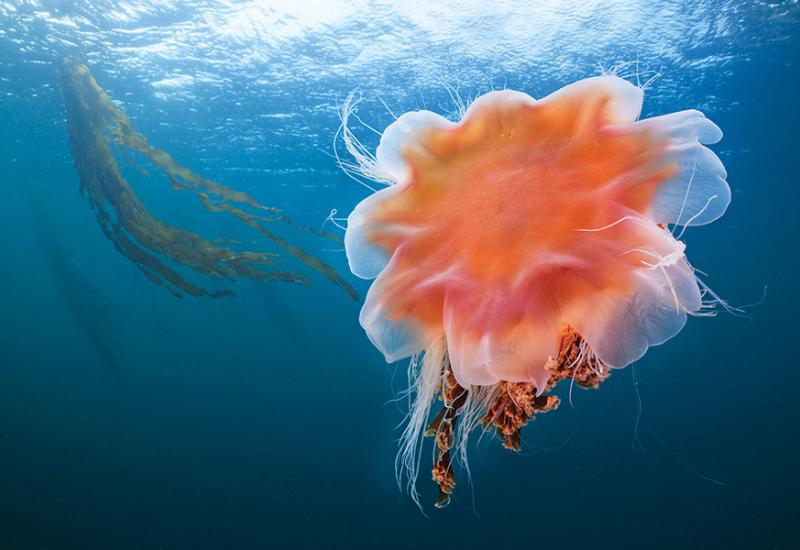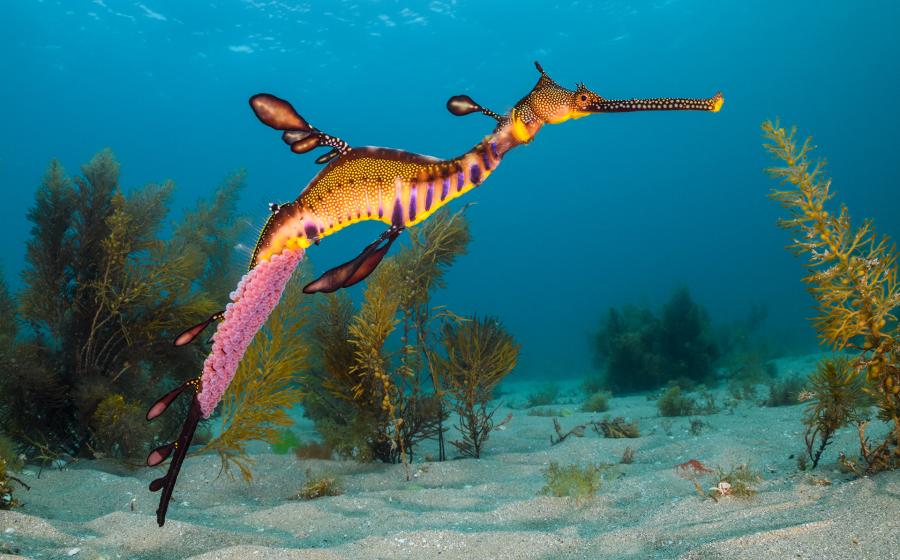Cayman Five Ways— Returning Diver

Captain Keith Tibbetts Wreck
My first dive in the Cayman Islands was as memorable as my first kiss: Grand Cayman’s Bonnie’s Arch, a coral formation with an ample swim-through that was nearly obscured by a massive school of silvery tarpon. The tarpon encounters are no longer as reliable as they once were, but this North Wall site, an easy 150-yard kick from famed Orange Canyon, is a lovely photo op. I was hooked.
“The diving is better than anywhere in the -Caribbean,” says Keith Sahm, general manager of Sunset House on Grand Cayman. Sahm might be partial, but the islands’ lucky geology — “We are the top of an underwater mountain chain (the Cayman Ridge),” says Sahm — has contributed to the diving’s overall excellence. “There are no industries or run-off from a hilly topography,” says Sahm. The result is “sheer, exhilarating walls in gin-clear waters.”
Sahm’s praise for the islands is echoed by Jason Belport, general manager of Brac Reef Beach Resort and Little Cayman Beach Resort located on Grand Cayman’s sister islands: “The islands have long been viewed as the capital of the diving world.”
In fact, divers have been flocking here ever since dive-industry pioneers started putting cruise-ship passengers on Grand Cayman’s reefs in the 1950s. Since then, some of the dive sites have become legendary, such as Bloody Bay Wall and Orange Canyon. But Sahm has another favorite: “I think the Grand Cayman dive everyone should make is Stingray City. I have seen quite a few folks actually moved by their experience with the rays, and they were skeptical before they went.”

Cayman Five Ways— Returning Diver
As for the sister islands, Belport has his choice picks too. “The Chutes (West, Middle and East) on Cayman Brac offer tremendous color — beautiful deepwater sea fans and wrasses, angelfish, grouper, turtles, and just about every type of hamlet,” he says. “Mixing Bowl is at the center of the Bloody Bay Marine Park off Little Cayman, and is home to schools of horse-eye jacks and chubs, as well as several resident Nassau grouper.”
As for me? My favorites include the islands’ wrecks — the Kittiwake and Tibbetts — as well as Grand Cayman’s Devil’s Grotto, especially in late summer when the swim-throughs are packed with silversides and tarpon. Shafts of sunlight sifting through the reef’s cracks and openings make this mazelike site especially nice for -underwater photographers.
I’ve had countless dives in the Caribbean, but I’ll always remember my first dive on Bonnie’s Arch. Like my first kiss, the memory of that magical experience keeps me coming back to the Cayman Islands.
For more information on scuba diving in the Cayman Islands, visit www.divecayman.ky
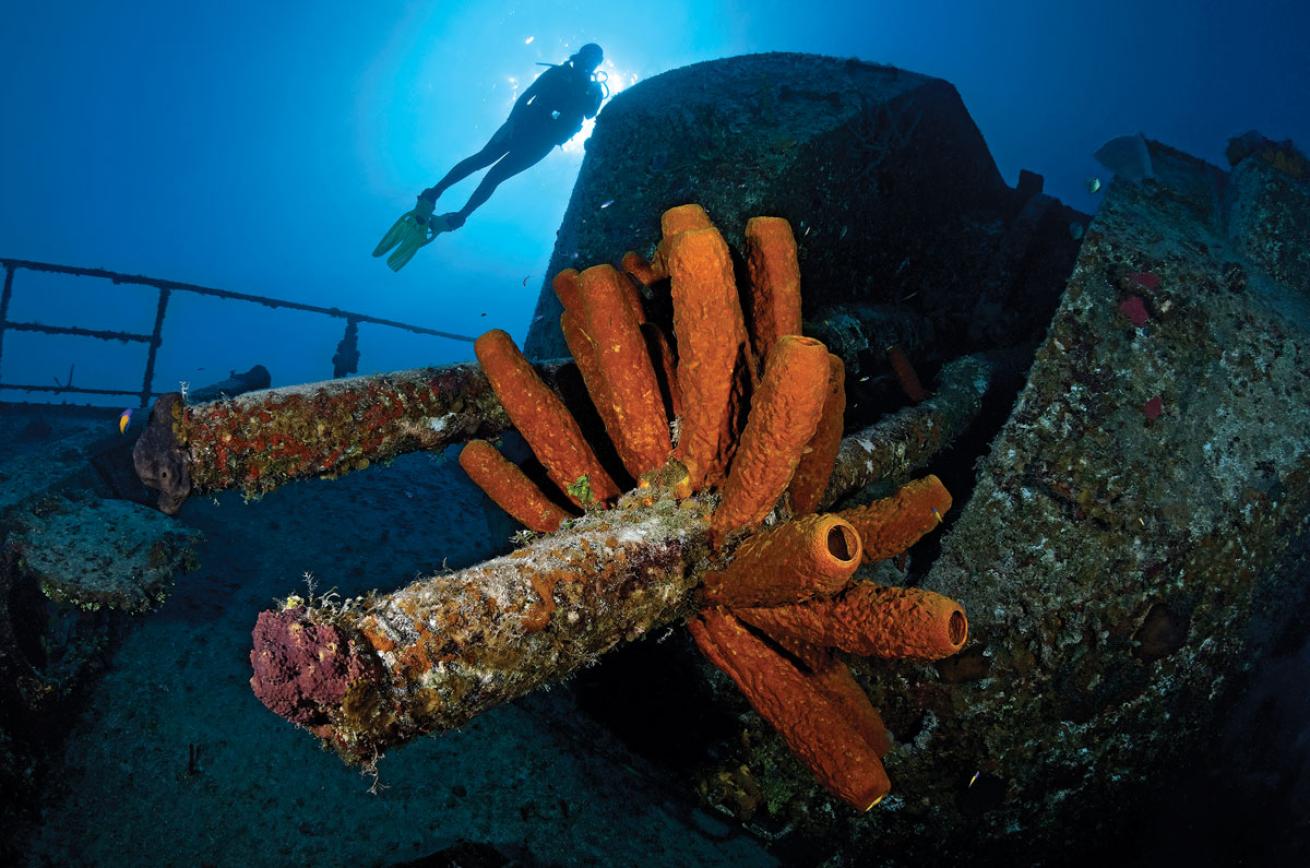
My first dive in the Cayman Islands was as memorable as my first kiss: Grand Cayman’s Bonnie’s Arch, a coral formation with an ample swim-through that was nearly obscured by a massive school of silvery tarpon. The tarpon encounters are no longer as reliable as they once were, but this North Wall site, an easy 150-yard kick from famed Orange Canyon, is a lovely photo op. I was hooked.
“The diving is better than anywhere in the -Caribbean,” says Keith Sahm, general manager of Sunset House on Grand Cayman. Sahm might be partial, but the islands’ lucky geology — “We are the top of an underwater mountain chain (the Cayman Ridge),” says Sahm — has contributed to the diving’s overall excellence. “There are no industries or run-off from a hilly topography,” says Sahm. The result is “sheer, exhilarating walls in gin-clear waters.”
Sahm’s praise for the islands is echoed by Jason Belport, general manager of Brac Reef Beach Resort and Little Cayman Beach Resort located on Grand Cayman’s sister islands: “The islands have long been viewed as the capital of the diving world.”
In fact, divers have been flocking here ever since dive-industry pioneers started putting cruise-ship passengers on Grand Cayman’s reefs in the 1950s. Since then, some of the dive sites have become legendary, such as Bloody Bay Wall and Orange Canyon. But Sahm has another favorite: “I think the Grand Cayman dive everyone should make is Stingray City. I have seen quite a few folks actually moved by their experience with the rays, and they were skeptical before they went.”
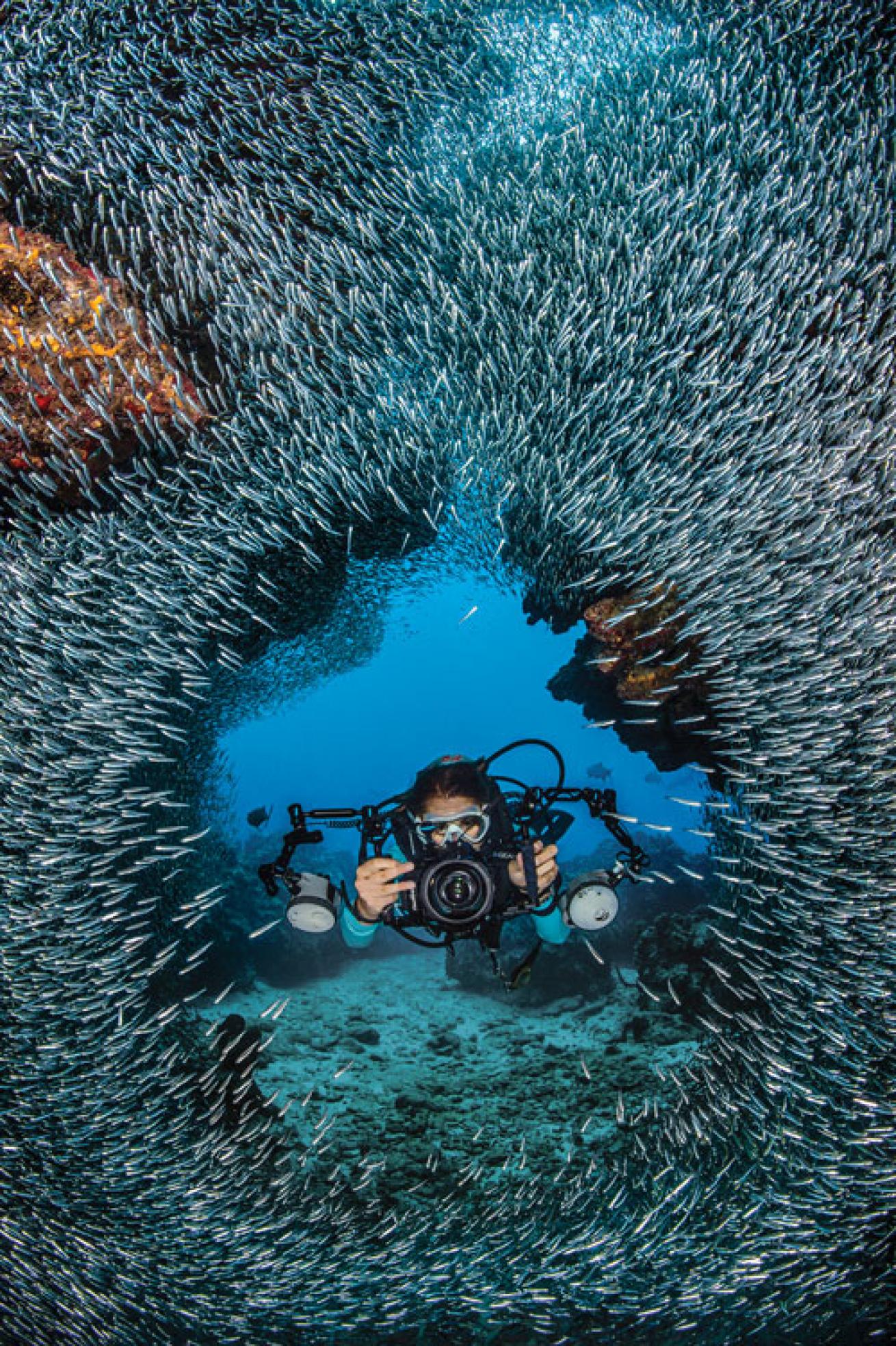
As for the sister islands, Belport has his choice picks too. “The Chutes (West, Middle and East) on Cayman Brac offer tremendous color — beautiful deepwater sea fans and wrasses, angelfish, grouper, turtles, and just about every type of hamlet,” he says. “Mixing Bowl is at the center of the Bloody Bay Marine Park off Little Cayman, and is home to schools of horse-eye jacks and chubs, as well as several resident Nassau grouper.”
As for me? My favorites include the islands’ wrecks — the Kittiwake and Tibbetts — as well as Grand Cayman’s Devil’s Grotto, especially in late summer when the swim-throughs are packed with silversides and tarpon. Shafts of sunlight sifting through the reef’s cracks and openings make this mazelike site especially nice for -underwater photographers.
I’ve had countless dives in the Caribbean, but I’ll always remember my first dive on Bonnie’s Arch. Like my first kiss, the memory of that magical experience keeps me coming back to the Cayman Islands.
For more information on scuba diving in the Cayman Islands, visit www.divecayman.ky


